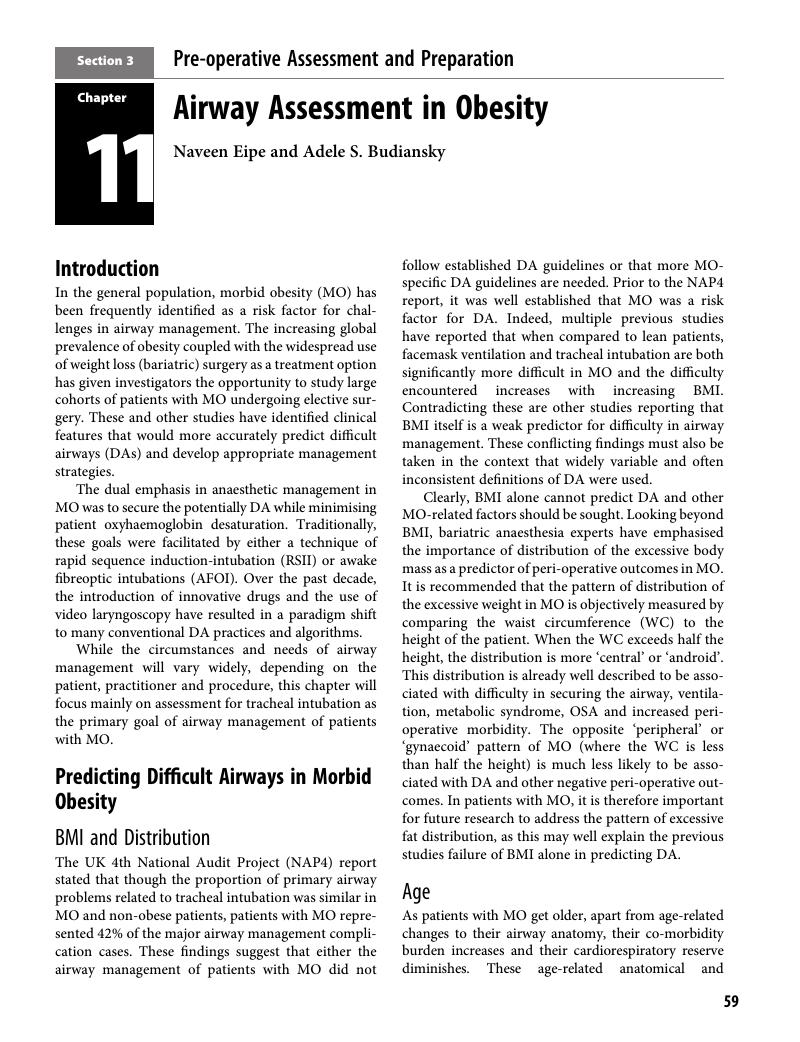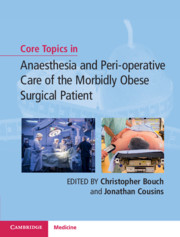Book contents
- Core Topics in Anaesthesia and Peri-operative Care of the Morbidly Obese Surgical Patient
- Core Topics in Anaesthesia and Peri-operative Care of the Morbidly Obese Surgical Patient
- Copyright page
- Contents
- Contributors
- Preface
- Abbreviations
- Section 1 Background to Obesity, Epidemiology and Anthropology
- Section 2 Pathophysiology of Obesity
- Section 3 Pre-operative Assessment and Preparation
- Chapter 11 Airway Assessment in Obesity
- Chapter 12 Respiratory Assessment in Obesity
- Chapter 13 Cardiovascular Assessment in Obesity
- Chapter 14 Sleep Disordered Breathing: Assessment and Management in Obesity
- Chapter 15 Risk Assessment and Stratification for Obesity
- Chapter 16 Peri-operative Anaesthetic Implications in the Obese Child
- Chapter 17 Ward and Operating Room Equipment for the Obese
- Section 4 Intra-operative Management
- Section 5 Post-operative Care
- Section 6 Bariatric Surgery
- Index
- References
Chapter 11 - Airway Assessment in Obesity
from Section 3 - Pre-operative Assessment and Preparation
Published online by Cambridge University Press: 24 September 2018
- Core Topics in Anaesthesia and Peri-operative Care of the Morbidly Obese Surgical Patient
- Core Topics in Anaesthesia and Peri-operative Care of the Morbidly Obese Surgical Patient
- Copyright page
- Contents
- Contributors
- Preface
- Abbreviations
- Section 1 Background to Obesity, Epidemiology and Anthropology
- Section 2 Pathophysiology of Obesity
- Section 3 Pre-operative Assessment and Preparation
- Chapter 11 Airway Assessment in Obesity
- Chapter 12 Respiratory Assessment in Obesity
- Chapter 13 Cardiovascular Assessment in Obesity
- Chapter 14 Sleep Disordered Breathing: Assessment and Management in Obesity
- Chapter 15 Risk Assessment and Stratification for Obesity
- Chapter 16 Peri-operative Anaesthetic Implications in the Obese Child
- Chapter 17 Ward and Operating Room Equipment for the Obese
- Section 4 Intra-operative Management
- Section 5 Post-operative Care
- Section 6 Bariatric Surgery
- Index
- References
Summary

- Type
- Chapter
- Information
- Core Topics in Anaesthesia and Peri-operative Care of the Morbidly Obese Surgical Patient , pp. 59 - 62Publisher: Cambridge University PressPrint publication year: 2018



